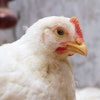Now is the perfect time to discuss how to reformulate diets for heat-stressed broilers. Like every year, and before the long heat waves of high-summer hit, certain nutritional intervention strategies should be employed to alleviate the negative effects of heat stress on feed intake.
It should be reminded that broilers reduce their feed intake under heat stress because digestion and metabolism of feed increases the internally produced heat, making thus animals even more uncomfortable. It is also important to realize that heat stress combined with high humidity increases dramatically the level of discomfort compared with hot but dry environments.
The following are general ideas on how to address this problem:
Increase nutrient density
It is generally assumed that daily nutrient uptake can be maintained during summer months if nutrient density increases proportionally to the expected reduction in feed intake. For example, if feed intake is expected to drop by 10 percent, then all nutrients (including vitamins, minerals and trace minerals) should be increased by 10 percent to compensate for the reduction in feed intake. For several nutrients, however, there are manufacturing limits that may restrict the application of this strategy. For example, it is not always practical to add more than 6-8 percent fat in home-mixed diets. Also, the concentration of certain additives cannot be easily changed without knowing how this might affect animal health. In many cases, however, the drop of feed intake is so severe that feed density cannot be increased enough to compensate for the loss. When this happens, then additional measures are required.
Reduce excess protein
Excess protein is deaminated and excreted. This process generates substantial metabolic heat, and, to this end, it is highly recommended to reduce dietary protein concentration by about 2 percent with the aid of crystalline amino acids. Further reductions in dietary protein are either economically unfeasible or result in diets limiting in valine and isoleucine, but careful reformulation might unveil opportunities for bringing down total crude protein by up to 4 percent points.
Reduce fiber concentration
Fiber digestion generates considerably more heat compared to carbohydrates, with fat and lipids generating the least amount of internal heat. Thus, one of the more common measures to combat heat stress is to reduce dietary fiber by 1-2 percent (depending on initial concentration). This suggestion is of value only when diets are formulated with high-fiber agroindustrial byproducts, as typical cereal-soya based diets offer very little opportunity for reducing dietary fiber levels.
Increase use of fat calories
Following from the above, it appears that fats and oils not only increase dietary density, but they also generate less heat during digestion and metabolism. Therefore, diets high(er) in lipids are almost invariably recommended under conditions of stress heat. However, it is always imperative to also increase (proportionally) the levels of all amino acids to avoid unbalancing diets.
Add additives
Research and practical experience has clearly demonstrated that adding certain additives, such as betaine, vitamin C, potassium chloride or sodium bicarbonate can help reduce the impact of heat stress, improve feed intake and growth, and in general enhance animal health. Finding the correct dosage, medium (water or feed) and combination of additives is a delicate process best left to those with close knowledge of each individual farm’s problems.
Pelleted diets
Pelleting diets increases physical density resulting in higher uptake of nutrients at a given volume of feed. Combined with increased nutrient density, these two strategies help markedly in sustaining daily nutrient intake during heat stress.

















